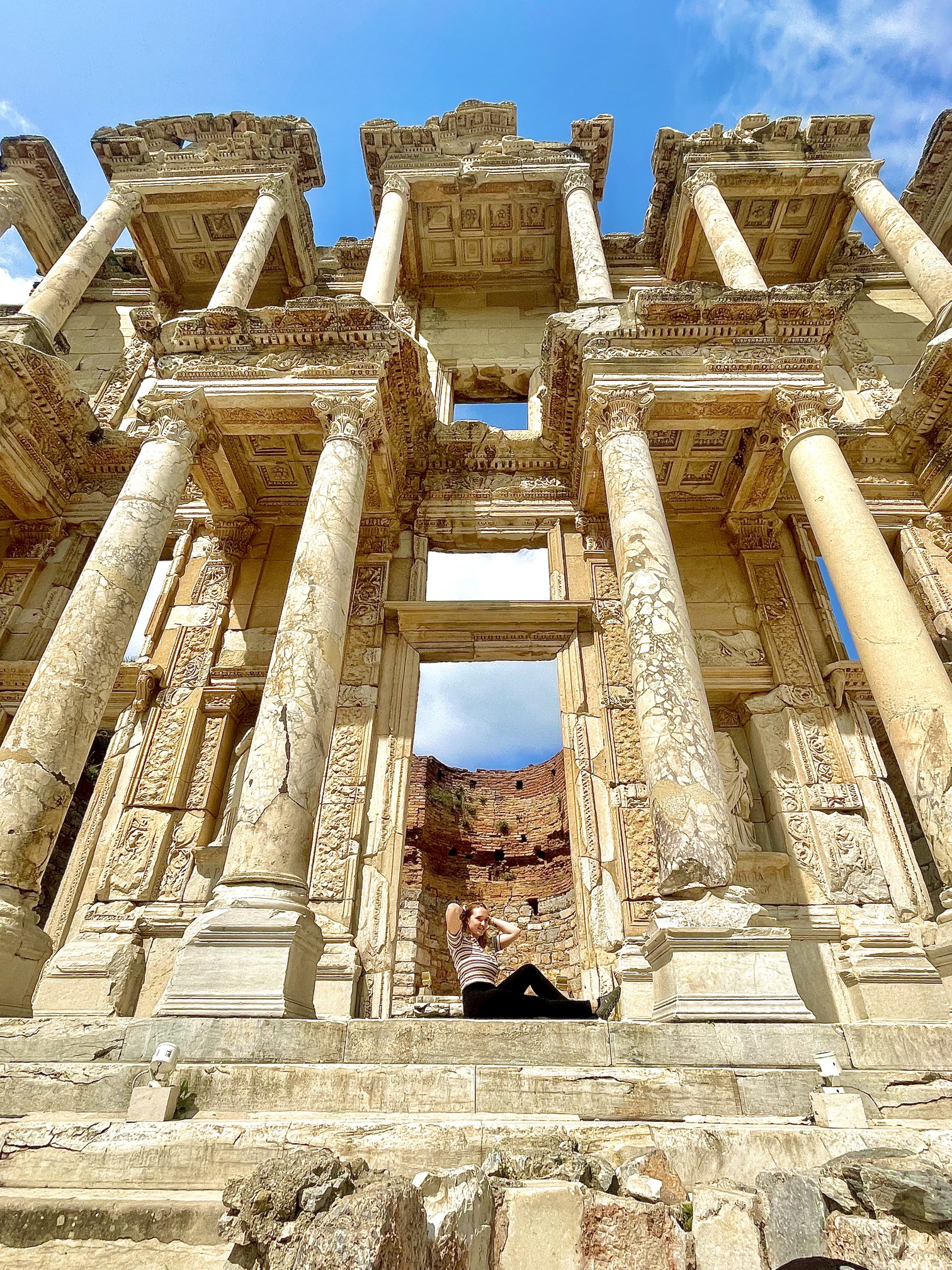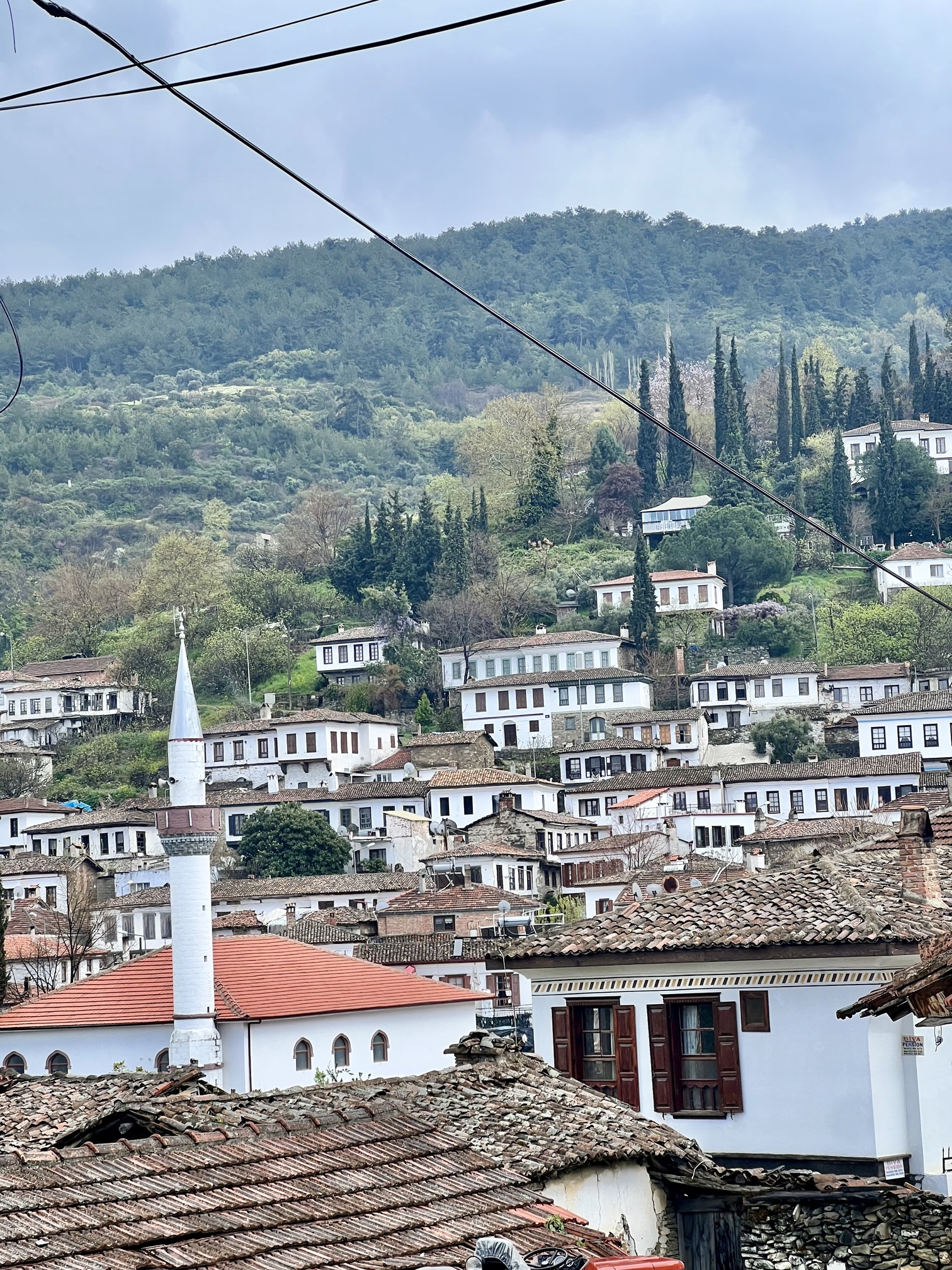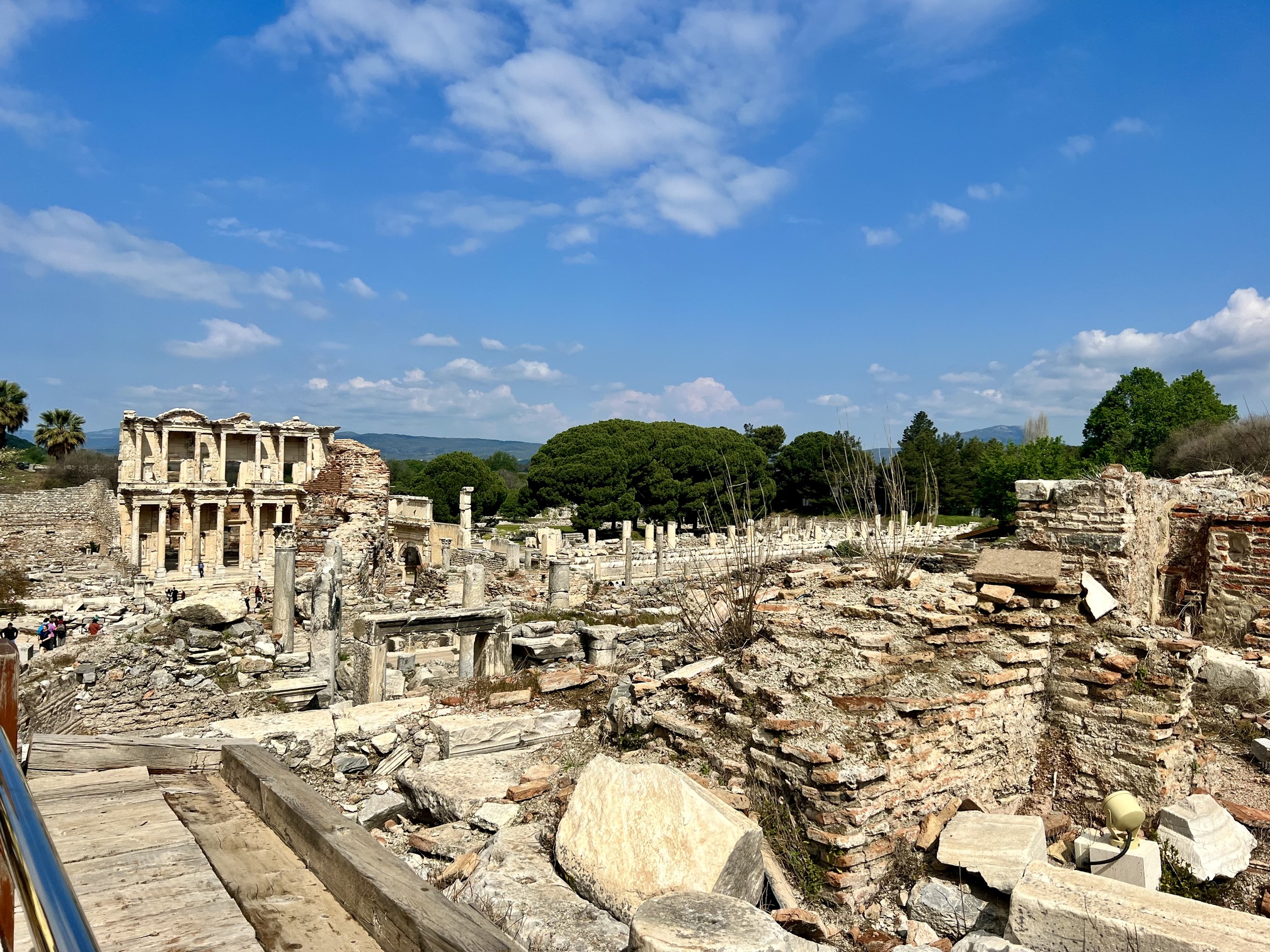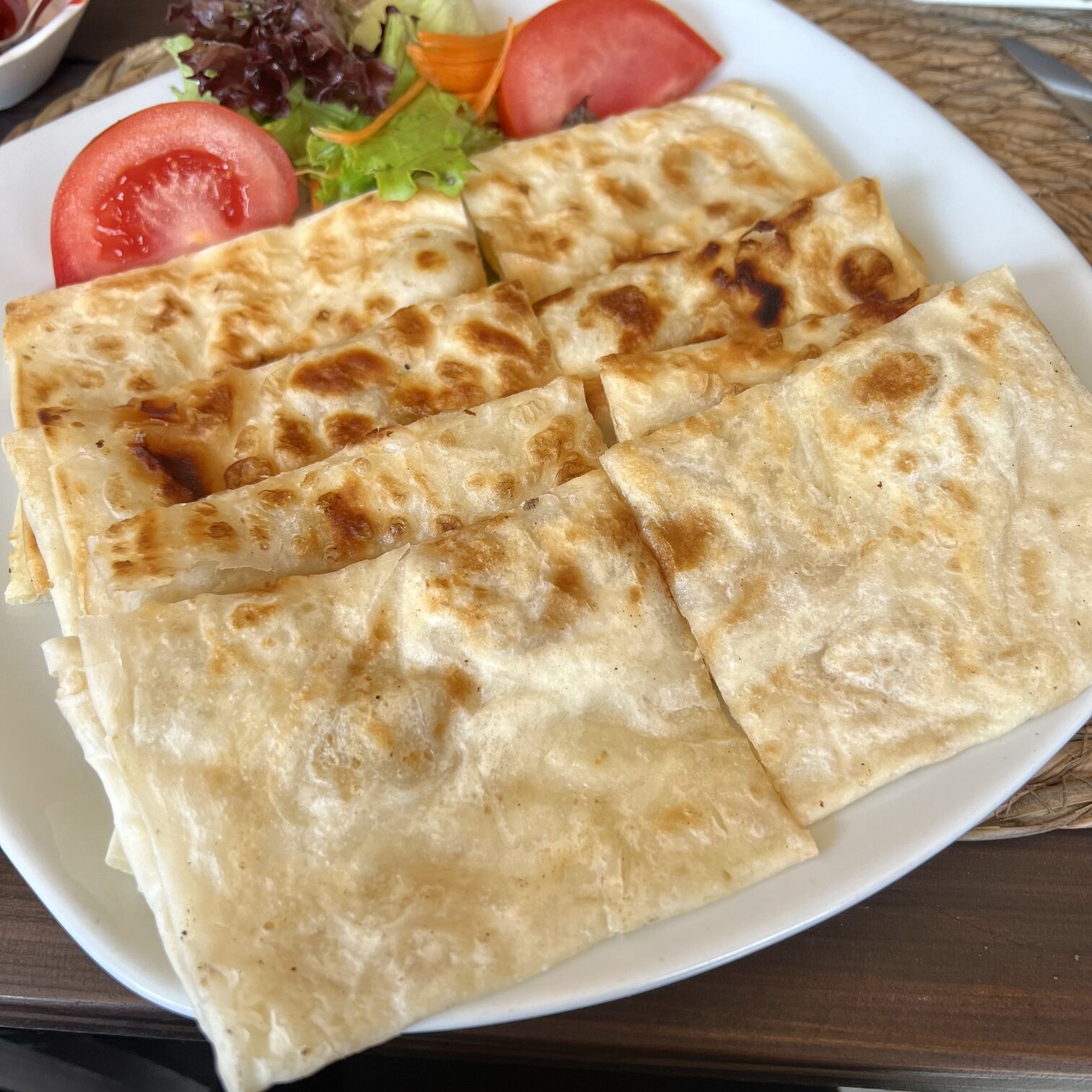Travel Guide to Selçuk, Türkiye
Ra's Travel Guide to Selçuk
Home to the ancient city of Ephesus; a complete travel guide to Selçuk.

While the majority of tourists visit Selçuk for Ephesus, there’s more to see and experience beyond the ancient city, such as the Basilica of St. John and the House of the Virgin Mary. This small city is located just inland of the Aegean Coast, offering a great escape for those seeking a break from the hustle and bustle of other cities in Turkey or those who want to experience a different vibe. Continue below in this travel guide to Selçuk to maximize your visit.
Getting to Selçuk, Türkiye: Transportation Options and Travel Tips
Where to Stay in Selçuk, Türkiye?
Despite being a small city, Selçuk offers various accommodation options, including hotels, guesthouses, hostels, and Airbnbs. Some hotels and guesthouses provide inclusive breakfast, allowing budget travelers to experience a traditional Turkish breakfast and save money.
If you plan to stay in Selçuk, several options have received positive reviews from fellow travelers. While I visited Selçuk as a day trip en route to Ayvalk, others have shared their experiences staying in the following accommodations:
Please note that I did not personally stay at any of these establishments, and these suggestions are based on recommendations from other travelers. For more detailed information, consider checking recent reviews, amenities, and the specific features of each option to find the one that best suits your preferences and needs.

Guides to Türkiye
Getting Around Selçuk, Türkiye
Car
Renting a car is not necessary in Selçuk, unless you plan on traveling between different cities in the area or exploring the country extensively and feel comfortable with international driving. You will need an international driver's license and should familiarize yourself with local driving customs and laws.
Taxi
Uber and Bolt are not available in Turkey. While it's not essential to use a taxi within Selçuk, local taxi companies are your only option. To ensure a fair price, overcome language barriers (if you don’t speak Turkish), and secure a certified taxi, I recommend having a local guide or your accommodation call for a taxi. Be sure to confirm the rate before accepting the ride.
Bicycle
You can rent a bike from local companies, offering an alternative to visit Ephesus or other sites in Selçuk outside the city center. However, having a bike is not necessary for getting around; it's just another option to enhance your visit to Selçuk.
Walking
Selçuk is a small city, making walking the best option for getting around and experiencing the sights. You can even walk to Ephesus from the city center, covering a 3-kilometer distance in about 30 minutes. Just be prepared with comfortable walking shoes. Many locals and tourists stroll around the city throughout the day. I encountered no issues while walking with a group of women.
What to Do in Selçuk, Türkiye?
Walking Tour
One of the first and my favorite things to do when traveling to a new city is to go on a walking tour to learn about the city, about things to do, and to gain tips from a local. Several travel companies offer bookings for guided walking tours in the area. However, I encourage people to try a free walking tour where the price of the tour is set by you at the end with a cash tip. These tours are led the majority of the time by locals who do tour guiding as a passion project and to meet new people, which means they’re happy to answer all of your questions and point you to off-the-beaten tourist trap destinations. Check out this company, which also offers free walking tours of Ephesus in addition to Selçuk city center: Strawberry Tours.
Ephesus
The main destination for visitors to Selçuk. Written as “Efes” in Turkish, the ancient city was once a Greek city and then a Roman city, which is reflected in the remains today. During 100 BC, Ephesus was one of the largest Mediterranean cities in the world. It was also potentially the writing location of The Gospel of John from 90 to 100 AD. Today it contains the largest collection of Roman ruins in the eastern Mediterranean, with only 15% of the city may be excavated. Be sure to visit the famous Library of Celsus, the most photographed spot within the site.
The Basilica of St. John
Built during the 6th century AD over the believed burial site of John the Apostle. The church was constructed in the Byzantine era, which is reflected in the design of the ruins. During the 1100s, the church was turned into a mosque after Ephesus was captured by the Seljuks. The entrance fee is 30 TRY.
House of the Virgin Mary
While it is still not confirmed today, this is the place where Mary may have arrived with Saint John and spent her remaining days. The association of Mary with the house only began in the 19th century after Katharina Emmerich, a German nun, had vivid dreams and visions of the house's location. She provided the location and a description of the house. Afterward, a French priest traveled to the said location and discovered the ruins of a church. This has made it a popular pilgrimage site.

Isa Bey Mosque
An example of Seljuk-epoch architecture. The mosque was built between 1374 and 1375. It was constructed asymmetrically, on purpose, with its windows and doors not matching up, which is part of the uniqueness of the mosque. Women must dress conservatively and cover with a scarf. Please be respectful of the rules and of those praying.
Temple of Artemis
One of the Ancient Seven Wonders of the World. The temple was built around 323 BC as a shrine to the goddess Artemis. Documentation shows the potential reconstruction of the temple’s structure, which was impressive in its days. Today, only one of the 127 original pillars remains standing, leaving you to imagine what it once must have been.
Grotto of the Seven Sleepers
A Byzantine necropolis where several caves/tombs are located. According to legend, a group of youths hid inside the caves and fell asleep for years. When they woke up, the world had changed. There are both Christian and Islamic versions of the legend. Within the Christian version, it is said that seven young men came across the caves to escape religious persecution by the Roman Emperor Trajan Decius. They fell asleep while praying and awoke 250 years later when Christianity could be practiced freely. In the Islamic version, the legend is quoted in the Koran in Sura 18, verses 9 to 26 but not naming an exact number of sleepers who slept for 300 or 309 solar years. Today, it is the remains of a church that is padlocked by a gate. Sometimes you can get in to visit if there’s a guard on duty.
Ayasuluk Fortress
Located near the ruins of the Basilica of St. John is a Byzantine-style fortress dating back centuries. While the walls of the fortress are still intact, the inside of the fortress has been left to ruins. However, visitors can still explore the site and climb to the top for beautiful views of photos of Selçuk and the Basilica.
Belevi Mausoleum
A once-large tomb from the Hellenistic Era was built in 300 BCE as a burial place for Lysimachus, one of the successors of Alexander the Great. Today only ruins remain, but you can still see the large stone pyramid that would have been the location of the sarcophagus. Many of the artifacts found on-site are on display at the Ephesus Museum in Selçuk.
Ephesus Museum in Selçuk
An archaeological museum that has more than 64,000 artifacts on display showcasing the history of Türkiye and Anatolian history, including the artifacts from the Belevi Mausoleum mentioned above. Be sure to check out the Cukurici Mound, one of the earliest prehistoric settlements in the region, the figure of Artemis, and finds from St. John’s Basilica and Ayasuluk Fortress. Note that the museum is not on the Ephesus site, but within the city center, which is how many people miss exploring this gem.
Selçuk, with its rich historical tapestry woven into the fabric of its landscapes, offers travelers an unforgettable journey through time. Beyond the renowned Ephesus, the city unfolds a captivating narrative with its Basilica of St. John, the House of the Virgin Mary, and other hidden gems. Whether wandering through the ancient ruins or exploring the Byzantine structures, Selçuk stands as a testament to Türkiye's diverse cultural heritage. As you immerse yourself in the city's charm, let this travel guide to Selçuk be your companion, guiding you to discover the allure of its history, architecture, and the warm hospitality of its people.
Travel Tip
Beat the crowds at Ephesus by waking up early and getting there at the opening time of the site and by visiting during off-tourist season.
My Playlist for Selçuk, Türkiye
"Çayır Çimen Geze Geze" by Aşık Veysel Şatıroğlu
"Karadeniz Akşamları" by Musa Eroğlu
"Gelinim Mutfakta" by Neşet Ertaş
"Çanakkale İçinde" by Grup Yorum
"Kara Toprak" by Mahsuni Şerif

Recommended Reads
Explore Yosemite National Park: A Nature Lover’s Paradise
Key Highlights Next, let’s dive into what makes Yosemite National Park an unmatched treasure of the United…
Local Favorites: What Food to Eat in California
Key Highlights Introduction California, also called the golden state, is a great place for people who love…
Discover the 20 Best Places to Visit in California Now
Key Highlights Introduction California is a place that has something for everyone. You can find natural beauty…



